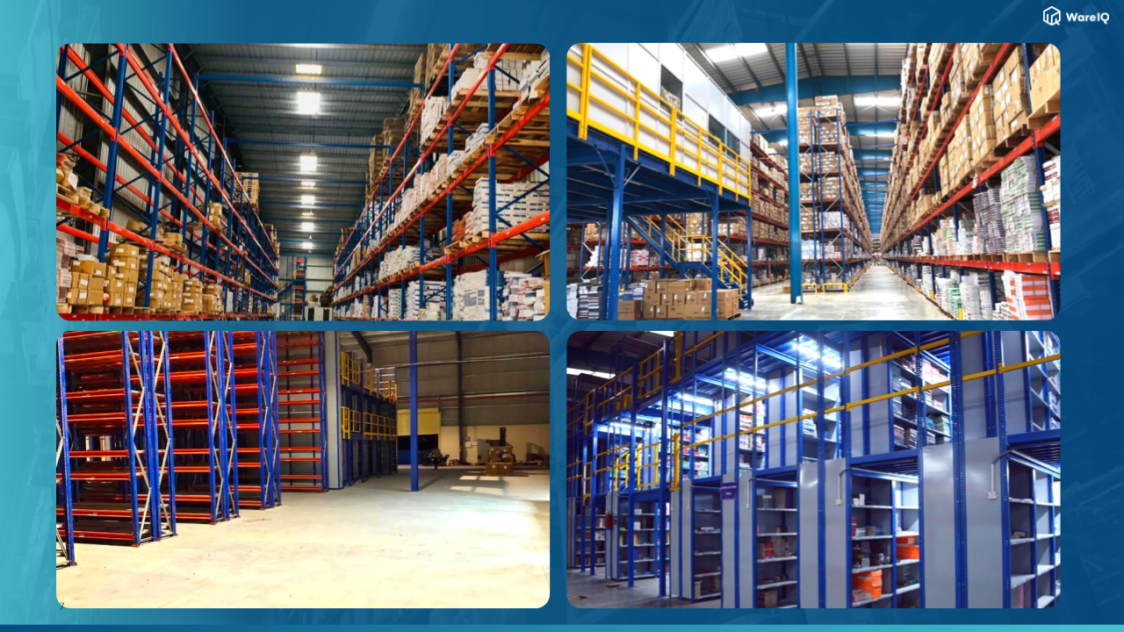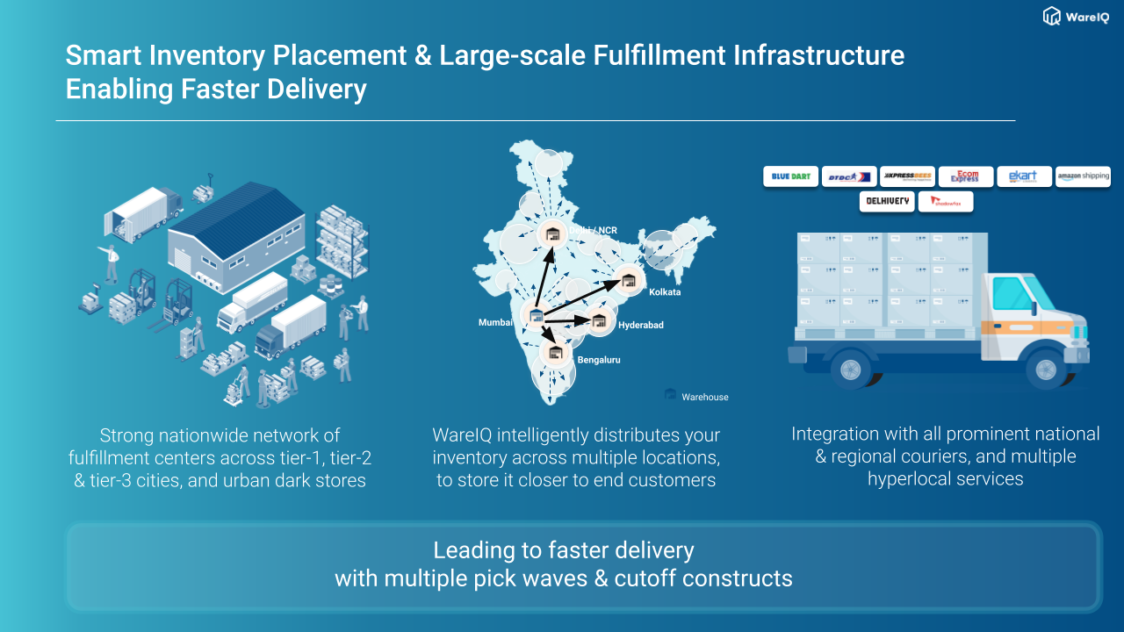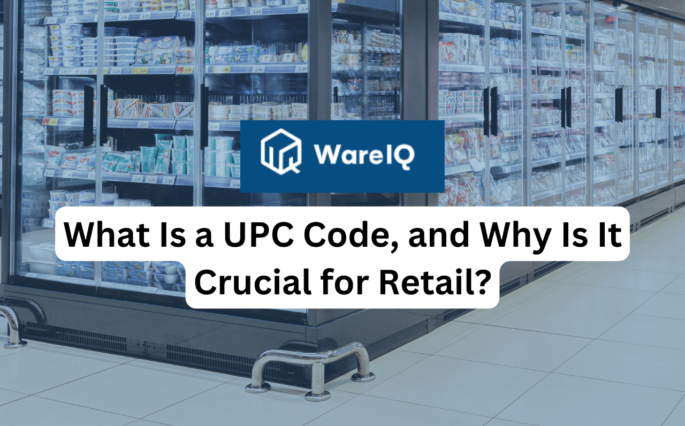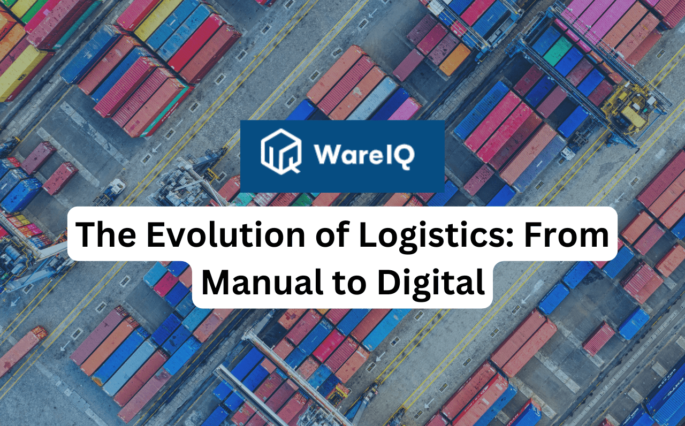Warehouse Vs Fulfillment Center: 5 Key Differences to Help You Choose the Best Storage Solution For Your Business in 2025

Companies that solely take care of a fulfillment warehouse, usually partner with businesses that work with non-commercial, or B2B orders that deal with large amounts of products. More substantial companies & retailers have their own warehouse and fulfillment center facilities, where they can store their redundant products, or rent storage to partake with other businesses. Generally, it’s a cost-effective idea for small and medium-sized businesses to lease warehouse and fulfillment center space, depending on the terms of the contracts.
Read along to know which storage infrastructure works best for your online business: Warehouse vs Fulfillment Center. In case you’re looking to store your business’s inventory until they’re in demand, or small warehouse and fulfillment spaces aren’t working out for you, a fulfillment warehouse distribution services is what your business requires.
- What are Warehouses and When are they Needed for your Business?
- What are Fulfillment Centers & When are they Needed for your Business?
- Warehouse Vs Fulfillment Center: 5 Key Differences in 2025
- What are the Advantages and Disadvantages of a Warehouse?
- What are the Advantages and Disadvantages of a Fulfillment Center?
- Fulfillment Warehouse and Fulfillment Center: Which Storage Solution is Suitable for Your Business in 2025?
- Difference Between Warehouse and Fulfillment Center FAQs (Frequently Asked Questions)
What are Warehouses and When are they Needed for your Business?
It is common to compare a warehouse and fulfillment centers although they have significant differences. An eCommerce warehouse is a structure where goods and products are stored for a huge period of time. It is a facility designed to store the inventory of a business in large volumes until they are needed to fulfill an order. The warehouse layout is designed in a way to ensure efficient fulfillment of orders.
A fulfillment warehouse is equipped with high shelves, piled with numerous goods, forklifts, and employees moving all around the structure. Operationally, what happens in a warehouse is a static job. Supply chain management includes warehouse management and fulfillment services.
WareIQ, an eCommerce fulfillment company, empowers online brands with a superior-tech platform to compete with Amazon like service levels by bringing their average delivery timelines from 5-10 days to 1-2 days.
What are Fulfillment Centers & When are they Needed for your Business?
In the product supply chain, warehouse and fulfillment centers are two distinct but equally significant components. A fulfillment center, like a warehouse, is a huge structure that houses a company’s goods. It does, however, serve a variety of other uses. Unlike warehouses, where products are stored for longer durations, fulfillment centers, and micro fulfillment centers only hold items for brief lengths of time before shipping them out. These centers fulfill B2B and B2C orders for retailers, eCommerce companies, corporations, and other businesses.
Fulfillment centers are responsible for the complete order fulfillment process in terms of operations. Order fulfillment is the process that begins with the sale of a product and ends with the customer’s post-delivery experience. It includes all you need to know about receiving, processing, and delivering orders. After a customer purchases a product from an eCommerce site, inventory is selected, boxes are packed, and labels are applied before being dispatched to the customer’s address.
Fulfillment centers can handle both B2B and B2C orders, which either refer to large volumes of products sent to a big-box retailer or orders delivered directly to a customer’s home.
Outsourcing eCommerce fulfillment is a great option because it covers everything from inventory management to negotiating prices with carriers. Outsourcing order fulfillment to a third-party logistics provider can help sellers manage inventory, improve customer experience, and enables more time to be spent on the core activities of the business.
The goal of eCommerce fulfillment services is to respond rapidly to incoming requests and deliver products efficiently. Unlike a warehouse, inventory in a fulfillment center does not sit around for long. While startups and small businesses may initially fulfill orders in-house, using a fulfillment warehouse is an important element of scaling up.
These terms are sometimes used interchangeably, and warehouse and fulfillment services are frequently provided by the same organization. However, there are significant disparities between the two. Understanding the relationship between a warehouse and fulfillment center, as well as the necessity for both, can help order processing and inventory management greatly.
Warehouse Vs Fulfillment Center: 5 Key Differences in 2025
Although the terms warehouse and fulfillment center are sometimes interchangeable, they have very different meanings. Both of these structures house inventory for firms that sell products online. Every fulfillment center is a warehouse, however, a warehouse and fulfillment center aren’t always equal.
Fulfillment and warehouse logistics are quite similar and can be easily mistaken. Consider geometry courses to help you remember the difference. A fulfillment center and a warehouse are like squares and rectangles when compared. Rectangles are squares, but squares are not rectangles.
The main distinctions are the degree of tasks completed inside and the requirements of clients they are each expected to serve. There are many differences between warehouse and fulfillment center services, which are listed below.
| Warehouse | Fulfillment Center |
|---|---|
| A warehouse is typically confined to storing only a few different inventories for an extended period. | On the other hand, the purpose of a fulfillment center is to handle orders as quickly as feasible. Fulfillment centers are not designed to retain inventory for more than a few months; their fulfillment solutions are very practical and simple. |
| Warehouses are frequently used to hold inventory for long periods and it is not always readily available. | Fulfillment centers are utilized for short-term storage because the goal is to keep inventory moving in and out in a continuous flow. |
| Warehouses rely on either the retailer or an external company to arrange transport facilities to pick up and deliver orders to customers’ locations. | Fulfillment centers often have their own transport and logistics facilities or partner with shipping aggregators to get goods delivered to customers. |
| A warehouse is primarily intended for long-term storage, pickups are less frequent and sellers and buyers have less choice when it comes to shipping options. Though it can save money when shipping numerous things to the same destination with the same delivery date (rather than multiple, smaller shipments), it frequently falls short of meeting the criteria of fast shipping to various locations. | When it comes to fulfillment center operations, inventory flows in a predictable pattern once orders are placed. To ensure on-time delivery to customers, shipping companies must increase the frequency of pickups. Certain shipping providers may plan pickups on specified days and times, while others may schedule pickups daily. It all relies on the seller’s requirements and the type of shipments being delivered. Customers obtain their goods in the time range specified by the company because of the flexibility and versatility of delivery alternatives. |
| The purpose of a warehouse is to store inventory safely and efficiently for a lengthy period, usually several months to a year. | A fulfillment center may oversee the entire fulfillment activities of a large number of eCommerce retailers and small businesses. |
What are the Advantages and Disadvantages of a Warehouse?
Advantages of a Warehouse
Products are always available: The primary advantage of warehouses is that products are available at all times, so companies need not worry about running short of stock when a need arises. As a result, retailers can focus on other vital issues rather than worrying about product shortages. In other words, just as a salaried individual who saves money does not have to worry about liquidity during a contingency, corporations with warehouses do not have to worry about the supply of goods since they have enough stock to fulfill any increase in customer demand.
Sales are never lost: If a company does not have a warehouse and receives a large order from a customer unexpectedly, it has no choice but to refuse the order because there is a limit beyond which it cannot produce goods unannounced, which will result in lost sales and customers gravitating to competitors, causing the company to lose market share.
Wastage is reduced: Warehouses have all of the facilities needed to safely store perishable items for extended periods, resulting in less wastage. If commodities are not housed in a warehouse, the possibilities of them being damaged are higher. In other words, because of warehouses, a corporation does not have to worry about wastage if sales are lower than expected.

Disadvantages of Warehouses
High setup costs: The most significant disadvantage of having a warehouse is the high initial setup cost, which many small businesses cannot pay, forcing them to rely on public warehouses or rented warehouses to store their goods. Simply said, high setup expenses are one of the most significant barriers to a company establishing its own warehouse for storing its items.
Additional administrative costs: Another disadvantage of warehouses is that, in addition to the initial setup costs, the company must also pay regular expenses such as warehouse employee salaries, electricity bills, and other administrative fees, all of which lower earnings. The benefits of having a warehouse must outweigh the ongoing administrative costs for the warehouse to be successful.
Negligible increase in sales: Warehouses can only assist in keeping a steady supply of items to match consumer demand; however, if a firm believes that establishing warehouses will aid in raising sales, it is incorrect; When a company has a solid product and a good marketing strategy, there will be an automatic reflection in the sales volumes. In other words, warehouses can help ensure that a company’s product never runs out, but if the company’s product isn’t good, owning a warehouse is pointless and wastes resources.
As can be seen from the points above, owning a warehouse has both advantages and disadvantages, which is why a firm should weigh the key factors before deciding whether or not to either set up its own fulfillment warehouse or rent out a warehouse from a dedicated company.
Suggested Read: Types of Warehouses in eCommerce
What are the Advantages and Disadvantages of a Fulfillment Center?
Advantages of a Fulfillment Center
Enables the company to focus on core aspects of the business: Using a fulfillment center allows you to delegate the fulfillment process to a trusted partner, allowing you to concentrate on growing and promoting your business, increasing sales, and sourcing products.
You can enhance the growth of your business when your eCommerce warehouse and fulfillment services are streamlined.
Reduction in payroll and benefits costs: Even if you have internal fulfillment personnel, as your business grows, more manpower will be required, which means increased payroll costs and benefit packages, which will eat into your profits. You may also have problems with employee turnover, which can be costly when you consider the time it takes to train personnel to do their roles properly.
Minimizing overhead costs: There are numerous fees associated with managing your fulfillment requirements. Warehouse rental, additional employees & salary, equipment, utilities, and warehouse management software will all be expenses. You can forecast your budget and estimate earnings if you choose a warehouse and fulfillment company to manage these areas because you will know the ongoing costs associated with the collaboration.
Enables huge shipping discounts: You will almost certainly incur more shipping charges as an individual business than if you partner with a fulfillment center. Because of the volume of goods they manage, fulfillment centers can negotiate lower shipping prices with numerous carriers. Furthermore, because of their proximity to your consumer and how carriers calculate shipping prices, shipping rates would be lower as a whole.
Management of Inventory: Inventory management must be done correctly. Managing the inventory of your business can be time-consuming and expensive. Partnering with a fulfillment company relieves you of that load. To monitor and report inventory, the most advanced inventory management systems and software systems are utilized. You always have real-time access to information, so you know how much inventory you have and what you need to reorder.
Disadvantages of a Fulfillment Center
Although there are a few disadvantages to working with a fulfillment center, certain customers have unique reasons for keeping their fulfillment operations in-house. These are the most significant barriers that hinder business owners from working with a fulfillment center.
Relinquishing control: Business owners prefer to have complete control over every element of their daily operations, including warehouse fulfillment services. If you collaborate with a top-rated fulfillment company, the shift will be seamless. All of the advantages will become apparent in a short period, and the ultimate results will speak for themselves.
Limitations on customization: When it comes to fulfilling orders, some businesses want to put their distinctive spin on things. The most prevalent areas of customization include handwritten or personalized notes, as well as brand-specific packing materials. It’s true that when you outsource to a fulfillment center, some of these nuances may have to be sacrificed but the lower prices which you can pass on to your clients, coupled with the extra time you can spend building your business, will make up for these tiny things.
Possibility of increased costs: While most clients will save money by working with a fulfillment center, there are times when doing so may increase costs, even if shipping fees are saved. This is especially common among merchants who trade in modest amounts and volumes. In the end, these smaller customers may benefit from a fulfillment center collaboration since it allows them to focus on sales, marketing, and overall business growth.
Mistakes made by vendors: When you outsource to a fulfillment center, you may not be aware of an issue right away, whether your vendor sends too little or too much product, the wrong product, or worse, damaged items. You may not even be aware of an issue until you receive complaints from a customer. Working with a fulfillment center will help you avoid these problems because we’ll keep track of your warehouse and fulfillment process from start to finish. Customers should keep in mind, though, that these things do happen, and that they should be prepared when they do.
Fulfillment Warehouse and Fulfillment Center: Which Storage Solution is Suitable for Your Business in 2025?
Each warehouse and fulfillment service has a distinct purpose. Making the best decisions for your company is critical as a business owner. The capacity to reach a wider network with full operational integration to sustain customer satisfaction is the difference between a fulfillment warehouse and a regular warehouse. Unless the purpose is only to store products for a long period, a fulfillment center’s consolidated services are more valuable.
Companies who choose to run their fulfillment in-house, limit their options. They’re trapped with a limited number of locations if they rely on only one or two warehouse and fulfillment centers, and they struggle to optimize for speedy shipping, which can impair the customer experience.
The capacity to pivot fast and go where the people are has become increasingly vital to fulfilling the changing needs necessary for customer satisfaction today. Customers demand the convenience of quick shipping at no additional expense. A warehouse simply lacks the capabilities to provide speedy, flexible fulfillment in a long-term manner. If you want to take advantage of warehouse and fulfillment services, WareIQ can be of great help.
WareIQ is one of India’s leading and fastest growing full-stack eCommerce fulfillment companies that offers a variety of services from same-day and next-day delivery, shipping badges and RTO Shield, to state-of-the-art technological solutions such as our custom WMS and our intuitive, well-designed app store. We can take care of your brand’s entire fulfillment requirements and ensure that you and your customers get the best order fulfillment in the country with our pan India fulfillment network and have a hassle-free experience and raise satisfaction levels to new heights.

- Pan India Fulfillment & Darkstore Network: Plug-and-play fulfillment infrastructure with no minimums, which is compliant with Amazon Seller Flex, Flipkart Assured, Myntra and other marketplaces
- Inventory & Network Planning Excellence: Best-in-class AI models for sales forecasting, product segmentation, and inventory management to reduce inventory by 40% and increase revenue by 10%.
- Vertically Integrated Fulfillment Tech Stack: Our Fulfillment Tech Solution supports integrations with 20+ top marketplaces & D2C platforms, and prominent national, regional and hyperlocal couriers, enhancing reach by covering deliveries for 27,000+ pin codes
- Supply Chain Productivity Applications: Integrate a host of supply chain productivity apps with a single-click to your existing CRMs, ERPs & accounting software to manage your logistics workflows from one command center. Use Apps like RTO Shield to get 100% RTO protection, Branded Tracking to turn your order tracking page into a profitable marketing channel, and many more.
Trusted by 300+ top Indian brands, we are helping them accelerate online sales and expedite their growth through a synergistic combination of advanced technology, robust fulfillment infrastructure & seller enablement services!WareIQ is backed by leading global investors including Y Combinator, Funders Club, Flexport, Pioneer Fund, Soma Capital, and Emles Venture Partner.









